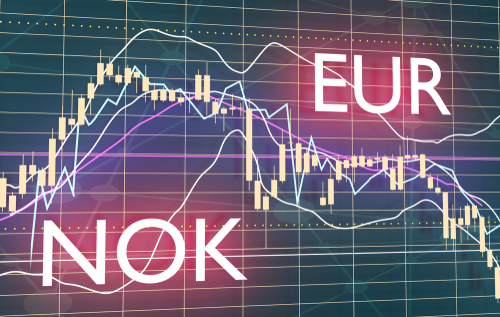
Commodities | Europe | FX

Commodities | Europe | FX
This article is only available to Macro Hive subscribers. Sign-up to receive world-class macro analysis with a daily curated newsletter, podcast, original content from award-winning researchers, cross market strategy, equity insights, trade ideas, crypto flow frameworks, academic paper summaries, explanation and analysis of market-moving events, community investor chat room, and more.
We have been bearish NOK; we claimed that one should have patience shorting EUR/NOK while we benefitted from being short NOK/SEK. Now, OPEC+ has cut production by two million barrels per day (Appendix: Table 1)! Brent crude prices have surged, and, in theory, this should be good for Norway. After all, a quarter of their exports are oil. So, should you short EUR/NOK?
Sitting around 10.5, EUR/NOK is up 8.5% since mid-August. That could make any reasonable person scratch their head. The irony is real; Europe is feeling the heat of an energy crisis, while Norway is left out in the cold of not benefiting from elevated commodity prices. It leaves EUR/NOK 20.1% overvalued; an initial glance would lead you to believe a sharp reversal is in order (Chart 1). However, we can easily argue the move is far from overdone. Two years prior EUR/NOK was trading at 11.1/11.2, 6.5% higher than current levels (Chart 2).

Crude oil prices topped near $130/bbl in March as the world began to travel more, while central banks had only just begun to raise interest rates. NOK felt the benefit at that time (Chart 3). However, this relationship has faded.
Then came the panic around natural gas and Europe’s ability to obtain enough of it. Prices skyrocketed and, again, NOK benefitted (Chart 4). However, prices have begun to tumble, and while our medium-term view is that Europe has insufficient gas resources to last the winter, prices may fall further still. As a result, NOK may continue to weaken.

Markets are favouring a poor global growth outlook rather than focusing on a tight demand-supply narrative to drive commodity prices. Indeed, when the market believes the Fed will turn more hawkish, risk appetite is hurt. And, as a result, equity prices suffer, as does NOK (Chart 5).
Adding insult to injury, Norway is suffering from record capacity constraints meaning there is less investment seeping through to Norway’s oil and natural gas sector (Charts 6, 7, and 8). So, even if Norway wishes to export more oil and gas, it may struggle (Chart 9).


Norges Bank hiked its policy rate to 2.25% (+50bp) at their last meeting, but added a dovish twist. They now expect the economy (mainland) to contract 0.3% through 2023 (previously +1.1%) and for unemployment to raise faster than before. It left the forecast for the terminal rate practically unchanged. And while this is largely reflected in the German – Norway two-year interest rate differential, it does not fully encapsulate Henry’s view for a 75bp hike from the European Central Bank (ECB) on 27 October alongside his 3% terminal rate (Chart 10).

Many factors suggest EUR/NOK has reached a medium-term top: it appears overvalued, it has reached year-highs; oil has returned above $90/bbl for the first time in three weeks; dwindling risk appetite is seeing a reprieve; the interest-rate differential has stopped widening. However, we believe this may be just a short-term narrative. As risk markets resume their life under pressure, so should NOK. And, assuming natural gas prices do not surge higher, it could mean EUR/NOK heads toward its 2020 highs.
In short, we believe a short-term equity bounce may help drive EUR/NOK lower. These lows are likely to be attractive levels to go long. Further afield, when Europe realises it will not make it through the winter unscathed, it is likely to be a good time to be short EUR/NOK.
Spring sale - Prime Membership only £3 for 3 months! Get trade ideas and macro insights now
Your subscription has been successfully canceled.
Discount Applied - Your subscription has now updated with Coupon and from next payment Discount will be applied.